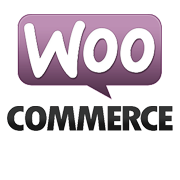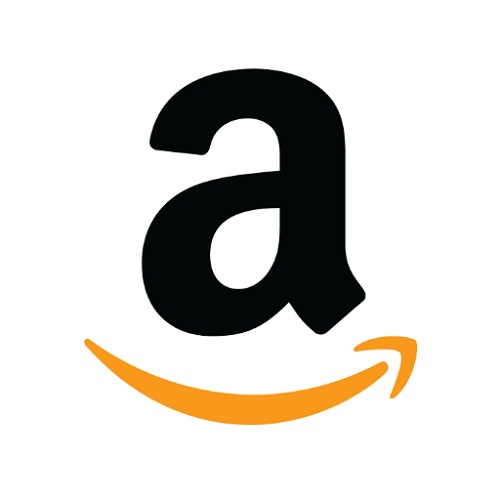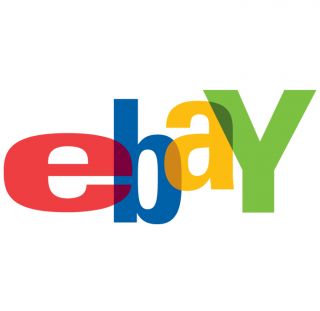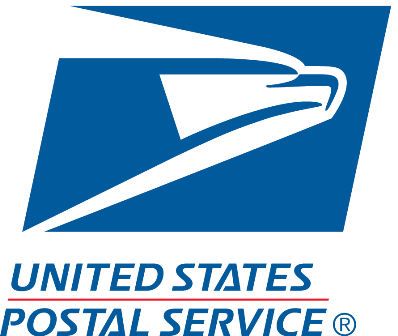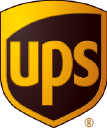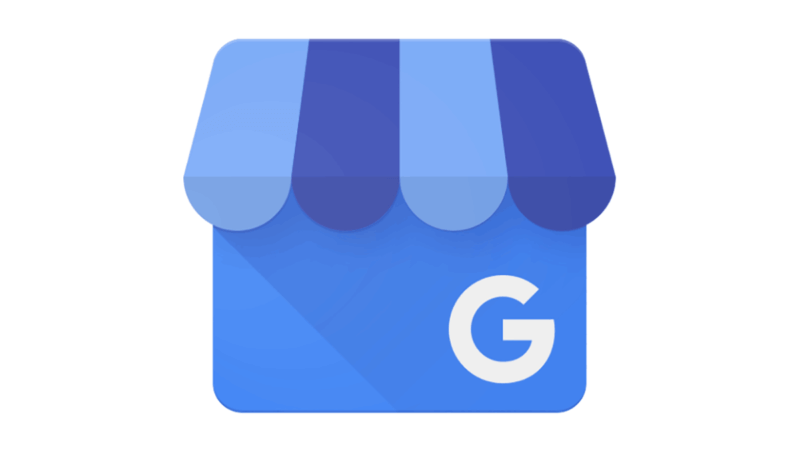How I Designed And Patented A $18K/Month Woodworking Accessory
Hello! Who are you and what business did you start?🔗
Hello, my name is Brett Burdick and I am the founder (this is the first time I’ve used that term) of Brex International, LLC which is sort of the umbrella company for The Hedgehog business that I’ll be talking about here.
My flagship product is The Hedgehog which is a patented spiral featherboard that is used in woodworking for improving quality and safety. A featherboard is mainly used on a table saw where it firmly holds a board being ripped (cut lengthwise) against the fence (the stationary “wall” the board is referenced against). A featherboard accomplishes two main functions:
- Maintains constant pressure against the board for a smooth, even cut,
- Helps reduce the chance of kickback which is where the board rides up onto the spinning blade and is violently thrown back toward the user.
Featherboards are also used on band saws and router tables.
The other products I sell are small stacking accessories that are used to stack two featherboards on top of each other for extra stability when cutting thicker boards on a table saw or band saw. Both products are shown below.

What's your backstory and how did you come up with the idea?🔗
I’ll go way back to when I was a kid growing up with parents who were independent DIYers. My dad was a buttoned-down physicist but he was also an entrepreneur (I didn’t know that word then and that he was one) who ran small side businesses such as storage units and apartment buildings - always small but always there in the background. I don’t know that I learned any direct skills from him but I did grow up thinking that was normal.
I studied electrical engineering in college and worked on avionics systems for several years after graduating. I picked EE because I could do math and companies were hiring. If you’re in high school reading this, I would encourage you to make your choice with more emphasis on where your passions lie. If I had known about industrial design back then, I might have chosen that.
About 30 years ago, I had an idea for a pretty radical-looking golf putter so I learned how to use 2D Autocad and had one milled from stainless steel. I tried to shop the idea to major putter manufacturers whose NDAs would have forced me to give up all rights to the design before they would even look at it (protecting themselves from future litigation in case they already had the idea). That was a non-starter for me. I modeled one out of clay and presented it to the USGA (the governing body for the Rules of Golf for the USA) who deemed it violated one of the rules. Without a partner and knowing that it would be illegal, I abandoned that venture.
However, it turned out that was auspicious because my sister’s boss saw that putter and figured that if I could design that, I could design products for him. He soon hired me to be the manager of product development for his company that manufactured electric fence products. There I learned how to design in 3D using Pro-Engineer and was 3D printing in no time (that was about 25 years ago). I designed dozens of products there over my 10-year tenure where I received about ten patents.
After that business was sold and my job moved out of state, I started my own engineering consulting business where I designed new products for local businesses. Much of my work was investigating new product ideas. About that same time, I launched Happy Dog DNA to sell dog DNA breed tests for a local lab that identify the breeds in mixed breed mutts. That product then transformed into a proof of parentage test for breeders to certify the parentage of the offspring of purebred dogs. That business is still active.
I have a modest woodshop in my basement where I’ve worked to renovate my 100-year old house as well as build a few pieces of furniture. One of the accessories that I often used on my table saw was a featherboard. Traditional featherboards have two knobs and are shaped like a parallelogram (go ahead and google it to see what they look like). Way back before they were injection molded from plastic, woodworkers would make their own by cutting the end of a board at an angle and then cutting “feathers” into the end. This would then be clamped to the top of the table saw. When manufacturers started making them from plastic, they modeled them after the DIY version and added two knobs so they could be attached to the tabletop. They were effective but adjusting them after cutting meant stopping the saw and spending time repositioning the featherboard for the next cut.
Originally, I imagined the majority of my sales would happen from my website and that I’d be busy shipping them myself. Within a week of going live, I also created an Amazon seller account which is where 87% of my sales are currently happening.
I recognized that this was a cumbersome process so I envisioned a spiral shape with a single knob and a single pivot point. After much prototyping, I had enough people tell me sincerely that this was something very different from anything else on the market that I was compelled to move forward with it.
The working name for my featherboard was going to be The Nautilus but after a friend joked that it looked like a hedgehog, I had my graphic artist work up the artwork with each name and I showed it to friends and asked them to vote. The Hedgehog won by a landslide so that clinched it. That was fortuitous since hedgehogs are lovable and trendy and it’s just a more welcoming name.
Take us through the process of designing, prototyping, and manufacturing your first product.🔗
The original design was intended to simply press the board tight against the fence for a smooth cut. I 3D printed a couple of prototypes from Shapeways and showed them to woodworking friends who gave valuable feedback with suggested improvements, including something to reduce kickback. This resulted in a much different design than I started with (you can see some of the progression on my About page). I repeated the process and put fresh prototypes back out there for more feedback.
I wanted to produce a couple of dozen prototypes and send them out to woodworkers to let them use them in normal shop conditions for several weeks to validate the final design. But because 3D printing that many would have been expensive, I learned how to make a silicone mold that I could use to cast several samples using a 2-part urethane material. Plus, it was something I was curious about anyway. It turned out all of those fingers on the part trapped air inside the mold and I never did get a usable part out of that mold!

I talked to several injection molders in my surrounding area but had a very difficult time getting them to take me seriously. I even contacted the Tennessee Department of Economic & Community Development which didn’t produce any leads to willing manufacturers. Plus, locally produced injection molds were much beyond my budget. Fortunately, I had an excellent relationship with a supplier in Hong Kong that I worked with at my previous job. They were supportive and eager to discuss producing the Hedgehog. They provided tooling quotes for the injection mold, the clamshell fixture, the knob mold, and the cast aluminum miter clamp mold. Of course, the quotes for the finished product varied based on the size of the production run - the piece price for a low volume run is more than double the cost of a higher volume run. When you’re starting and you have no idea if you’ll sell even one of something, that decision on how many to order is certainly not an easy one.
Regarding packaging, I looked at the Hedgehog as if it was how a featherboard should have been designed originally since once people see it, it just makes logical sense. With that notion, I wanted my packaging to harken back 100 years to old hardware stores. I hired a talented local graphic artist to design my logo and printed packaging insert with specific design guidelines and wording. For inspiration, I sent him these images of old whiskey labels that I think are works of art. Interestingly, I discovered these two labels separately from one another and it turns out that they’re from the same distillery.

The Hedgehog is sealed in a clamshell to securely hold all of the hardware in place (to reduce shrinkage at retail) but I designed it so that the “feathers” would be exposed so that retail customers could touch them and feel how flexible they are. The packaging gets lots of positive feedback.

Describe the process of launching the business.🔗
Before receiving the product that I could sell and ship, I took photos of the Hedgehog prototypes and generated lots of photo renders on my computer and began posting on Instagram. Of course, I started with zero followers and it took a long time to even have 100. But, I had the advantage of having an eye-catching product that shows well in photographs. I invited folks to sign up to be notified when it became available. Still, I only had a couple of dozen people sign up.
I had launched a couple of websites before featherboards.com so I knew my way around WordPress but, still, creating a website from scratch is always daunting. I spent a lot of time learning more about SEO, Google Analytics, WooCommerce, and other plugins, etc. Lots of entrepreneurs starting out choose "canned" platforms since they're pretty simple but I like WordPress because it’s so widely used and supported and there are many, many blogs and YouTube videos detailing how to get things done.
I financed the launch of the Hedgehog myself from my savings. My supplier required a 50% deposit on the tooling with the balance due after sample approval. They also required a 50% deposit for the product with the balance due before shipping so at least those big expenses were spread out over a couple of months. It was a lot of money for me and a lot of stress not knowing if it would work.
Since launch, what has worked to attract and retain customers?🔗
The nature of my product is that I’m unlikely to have repeat customers since it’s a pretty durable product and most woodworkers own only one featherboard. Some customers might have more than one and previous customers might buy a second one as a gift or so that they can stack them on top of one another, but I’d say for the vast majority, it’s one and done. Because of this, I haven’t put much effort into generating a mailing list. However, I do have the email addresses from my website sales which I will utilize for future product promotions.
I presented the Hedgehog to Lowe’s who declined and Home Depot who offered to sell it on their website where they would get full margin and I would be responsible for shipping. I was happy to have the offer but ultimately declined. I was well into negotiations with the national woodworking store, Woodcraft, but that fell through for reasons unknown. However, my local independent Woodcraft and my neighborhood Ace Hardware said yes! The local Woodcraft store continues to be a customer and I’ve picked up a couple of other retailers in the USA, France, New Zealand, and Australia.
Instagram has been a great resource since the woodworking and DIY community is active and supportive. My customers often post photos and videos of the Hedgehog in action in their shops which I repost and engage with. I’ve seen many posts that include the Hedgehog without being tagged and someone will ask what that crazy looking yellow thing is which helps build awareness. However, it’s difficult to know how much of that leads to sales.
I created my first YouTube video using a prototype before I had the product ready to sell.
The most impactful thing I did to promote the Hedgehog was to give several away to influencers. I understand that many of the big, mainstream influencers charge significant amounts to show products but when I sent them to folks, I just asked them to use them if they like them - no strings attached. Many of them showed them off and now they show up occasionally in unrelated posts. I’m talking about people with 50k-300k followers, not the 1M+ influencers.
Originally, I imagined the majority of my sales would happen from my website and that I’d be busy shipping them myself until volume warranted hiring a fulfillment center. Within a week of going live, I also created an Amazon seller account which is where 87% of my sales are currently happening. I secured a trademark for the name and logo and have both a design patent and utility patent so I am registered as the brand holder on Amazon. I restrict my retailers from selling on third-party platforms which means I am the sole seller on Amazon. Owning the brand gives you special privileges on Amazon such as being able to build a store and run experiments with product titles, etc.
One day in October of 2019, sales on my Amazon phone app were clicking higher and higher. I was certain something was broken because sales that day were many multiples of what was normal. I even asked a friend if her Amazon sales were also looking oddly high. It wasn’t until that evening when I opened YouTube on my phone that I understood what was going on. The first video presented had a thumbnail image of my Hedgehog! It turns out that one of the content creators who I sent a sample to included it in his Cool Tools video and sales exploded! It wiped out my Amazon inventory in two days and I was shipping dozens a day from my home office for the next few days.
The sales boost continued through the Christmas season which obliterated my sales projections. I was quickly going to run out of inventory which resulted in my shipping a pallet from China via air freight while the balance of my order shipped via ocean. As they say, it was a good problem to have.
An important combined benefit of sending the product to influencers and selling on Amazon is that many of the influencers have affiliate accounts with Amazon. That means that if they mention your product and a customer clicks on their affiliate link that results in a sale, they get a percentage. They’re motivated to help you since they benefit as well.
Pay attention to cash flow. If sales are good, it might be easy to get a little cocky and start spending a little too freely. Keep in mind that you might have a production run coming up and hopefully a new product that will require a large upfront investment.
How are you doing today and what does the future look like?🔗
It’s exciting to get that first order and I had several on the first day I turned on the store on my website because of the organic promoting I was doing on Instagram. I’ve only had two zero-order days (other than sales outstripping inventory) since launching at the end of 2017. Since I did practically every aspect of building my business myself, I don’t know that I could have launched my first product less expensively. I estimate that I covered my tooling expenses and first production run product costs in the first eight months.
I haven’t relied on advertising much but have promoted posts a couple of times on Facebook and Instagram and have advertised on Amazon and Google Adwords but most of my promotion has happened organically via enthusiastic customers and influencers. I’ve also been successful in getting reviews and mentions in print magazines, online blogs, and YouTube videos.
The large majority of my sales happen on Amazon. I’m disappointed that I only have a few hundred visitors to my website per month but I know that when people see the Hedgehog online, they naturally just go directly to Amazon rather than my website. My sales breakdown:
- Amazon: 87%
- Wholesale customers: 10% (the majority in Australia)
- My website: 3%
The success of the Hedgehog is helping me finance the development of my second major product which is a push block that is used to safely push board past a blade on a table saw orbit on a router table. Using Amazon Brand Analytics, I can see what other products customers looked at when shopping for a featherboard and a common one is a push block.
I wanted to manufacture this in the USA but had the same challenges I had with the Hedgehog with expensive tooling and injection molding companies who were doubtful about it would be successful. A couple of them simply ghosted me. Knowing my supplier in Hong Kong would produce an excellent product, I recently ordered the tooling from them and production will begin within a couple of months.
Through starting the business, have you learned anything particularly helpful or advantageous?🔗
Since I’ve been doing product design and development for over 20 years and had already built a couple of websites, I already had the skillset for much of what it took to get this off the ground. However, there is an unbelievable number of tasks required to put it all together before having a tangible, retail-ready product.
Early on, the biggest challenge and source of frustration was finding a manufacturing partner locally that would take me seriously. I probably looked like just another guy with a crazy idea that would likely fail. It would have been easy for me to doubt that I had a good idea but I had plenty of friends who convinced me I was on to something special. I’m not talking about just the friends who always have your back but folks who know woodworking and who give honest feedback. Ultimately, I was also fortunate enough to have an excellent relationship with a highly skilled manufacturing partner in China.
A lesson I learned from a previously failed business where I manufactured a patented golf putter (a different design from the one mentioned above) was to be real and honest about who you are and what you represent. In the putter business, I tried to present my business as a “real” business using words like “we” and “us.” I didn’t think golfers would buy a product from some guy working in his basement. I wasn’t being dishonest about it but was stripping away my personal journey and connection.
With the Hedgehog, my customers generally know it’s just me - I’m the designer, social media manager, customer service specialist, shipping clerk… My customers are from the DIY crowd and many of them are self-employed and hustling to make a living so we have a kindred connection. That’s important and rewarding.
What platform/tools do you use for your business?🔗
I chose the following platforms mostly for the same reasons: because they are flexible and there is an abundant number of users and online tutorials and forums where I can find answers to my problems (and they’re free). My website platform is WordPress; website shopping plugin is Woocommerce; my payments manager is PayPal; I ship USPS via PayPal (seems to be mostly a secret).
I obviously rely on Amazon where I take advantage of their reports, branding experiments, brand analytics, webinars, etc.
Google Analytics is powerful but I use it pretty passively.
For accounting, I use Quickbooks.
What have been the most influential books, podcasts, or other resources?🔗
My favorite podcast is How I Built This with Guy Raz. My favorite take away from about every episode is that guests who are the founders of these successful businesses mostly didn’t know what they were doing or where they were going when they got started. This is comforting to new entrepreneurs who feel the same way. Most attribute at least a portion of their success with luck and I agree.
I would recommend that new entrepreneurs search for businesses that provide marketing (and other) services and sign for their newsletters where you can learn tips and tricks and sit in on their webinars.
Advice for other entrepreneurs who want to get started or are just starting?🔗
How many times have you heard someone say that they had that same idea years ago?! The idea is the easy part - no matter how genius it might be. The next 10,000 steps are the hard part. It’s important to have a long-range vision but you need to take it one chunk at a time and be flexible on your path.
My top tips:
If your business involves a physical product (vs. a service), do as much development, and prototyping yourself as possible. You’ll save piles of money and you’ll learn to make changes constantly as you progress. And remember that making a prototype that doesn’t work isn’t a failure. Rather, it was exactly what was necessary to move to the next step.
Even if you’re not interested in obtaining a patent, spend some time with Google Patents and the US Patent & Trademark Office to make sure you’re not violating an existing patent (paying attention to their expiration dates). If you need a patent attorney, I would recommend using a local, reputable one who has worked with someone you might already know. I have no experience with businesses that help you “turn your dreams into reality” but the ones I’ve seen give off a scammy vibe so beware.
This seems obvious but YouTube is invaluable for learning how to do just about anything from creating a product to website development to SEO to social media to marketing…
Connect with the local office of your state’s Small Business Development Center. There they can help you develop a business plan, introduce you to experts, and present seminars about importing, exporting, marketing, accounting, etc.
Your city might have a makers group that you can join where you can meet members who can help with 3D design, prototyping, etc. They might even provide access to sophisticated equipment that would be difficult to find otherwise.
Your library can give you access to expensive subscription databases where you can do business research. My library offers free access to lynda.com which is an educational website where you can take courses on a tremendous number of topics. I learned the basics of Quickbooks using one of their courses.
I knew I had one chance to get the Hedgehog right on the first go so I had a pretty relentless attention to detail. My first production run was 4,800 pieces which could have been a lifetime supply if there were design defects or production problems. I got it mostly right but have made a couple of small improvements to the product and printed instructions on subsequent production runs which came from customer feedback.
And, finally, pay attention to cash flow. If sales are good, it might be easy to get a little cocky and start spending a little too freely. Keep in mind that you might have a production run coming up and hopefully a new product that will require a large upfront investment. If I hadn’t been keeping spending in check, my upcoming production expenses of around $60k would have been a little less comfortable.
Where can we go to learn more?🔗
I chose the name Featherboards because it was available on all platforms.
If you have any questions or comments, drop a comment below!

Download the report and join our email newsletter packed with business ideas and money-making opportunities, backed by real-life case studies.

Download the report and join our email newsletter packed with business ideas and money-making opportunities, backed by real-life case studies.

Download the report and join our email newsletter packed with business ideas and money-making opportunities, backed by real-life case studies.

Download the report and join our email newsletter packed with business ideas and money-making opportunities, backed by real-life case studies.

Download the report and join our email newsletter packed with business ideas and money-making opportunities, backed by real-life case studies.

Download the report and join our email newsletter packed with business ideas and money-making opportunities, backed by real-life case studies.

Download the report and join our email newsletter packed with business ideas and money-making opportunities, backed by real-life case studies.

Download the report and join our email newsletter packed with business ideas and money-making opportunities, backed by real-life case studies.
